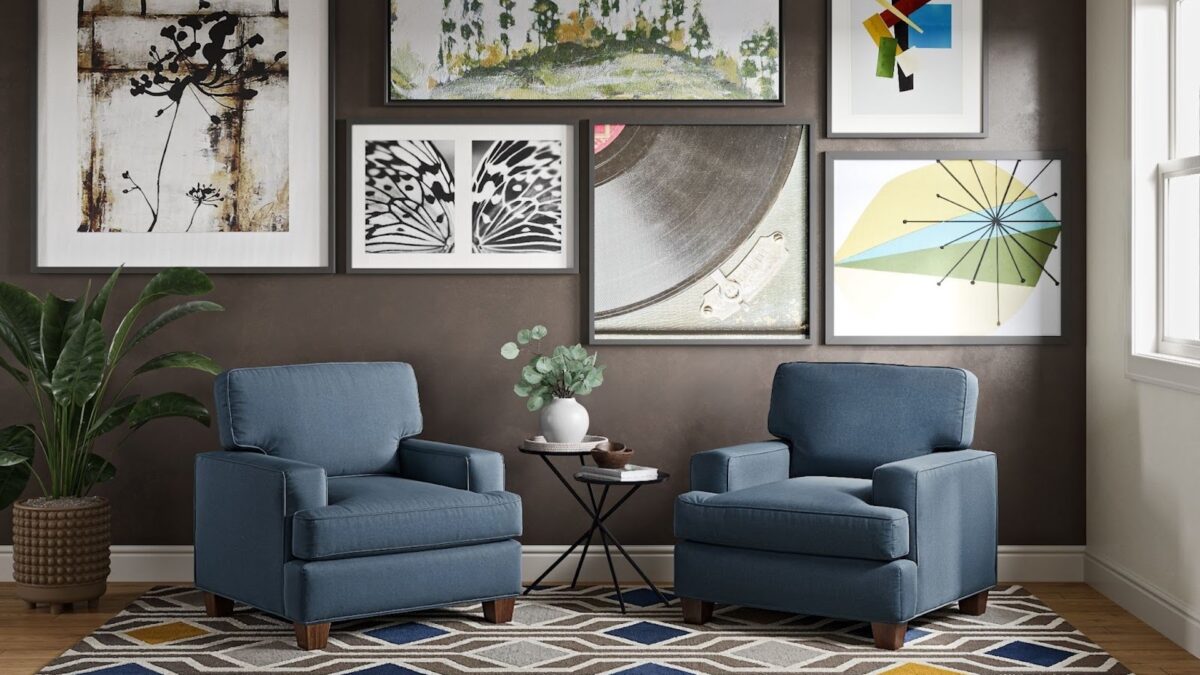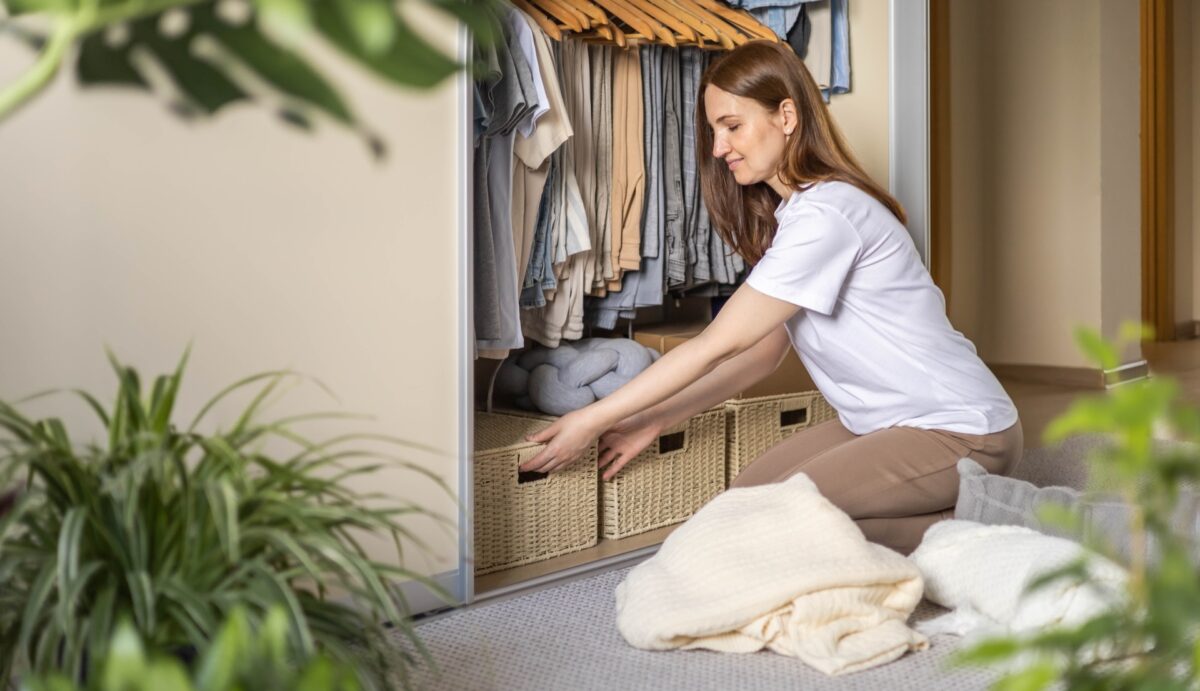On average, Americans spend 10 hours per day sitting, and this number increases to 15 hours per day for office workers. Not to mention, we spend around 7–8 hours per night in bed, which means you could be standing or moving around for only 1 hour a day.
Extensive sitting (particularly on unsupportive furniture) can take a toll on our posture — and our backs. If you have back pain, you likely experience the negative effects of prolonged sitting, making supportive, comfortable furniture even more crucial. Here’s how you can choose the best furniture for back pain to give yourself the support you not only need but also deserve.
Choosing the Best Living Room Furniture for Back Support
Whether you’re curled up on the couch reading a book or relaxing in the chair binging your favorite streaming series, the living room is where you spend a decent amount of your downtime. But just because that plush sofa or comfy lounger feels cozy in the moment doesn’t mean it gives your back the necessary support.
When looking for the best living room furniture for bad backs, you want to find a couch or chair that adjusts to and accommodates your body. There are a few key factors to keep in mind while shopping and testing furniture.
1. Consider the shape
Your living room furniture should be ergonomic, which means it is designed to fit the natural curvature of the human body. Avoid square, boxy, and flat furniture, and look for pieces that offer lumbar (lower back) and joint support. That means the best reading chair for back pain won’t be flat and squared-off but shaped like…well, your back!
2. Pick the right size
The width, depth, and length of your furniture can also play a huge role in how it affects your back. Some people feel their back pain is relieved when lying down, so it’s important to have a sofa long enough to accommodate your full height. You may want to consider finding a couch with no arms or lower arms so you don’t have to worry about straining your neck while lying down. You don’t want to cause additional back pain from the couch.
You also don’t want a couch or chair that’s too deep. If the backrest is far from the seat’s edge, you’ll likely end up slouching while sitting, which puts your spine in a terrible position and can lead to an achy back.
3. Choose appropriate firmness
Of course, you want your living room furniture to be soft, but is there such a thing as too soft? If your couch or chair is too soft, it won’t offer the support your body needs. Your hips might fall back in the seat, causing your spine to curve and putting stress on your back. You should aim for more firm furniture with a foam-density rating of 2.4 or above.
4. Look for adjustable positioning
The best living room furniture for back pain will be adjustable to help reduce pressure on your spine and joints. Many people believe that sitting upright is the best position for your back, but it turns out that sitting at a recline of at least 135 degrees may be better for relieving back pain.
Chairs like recliners might be the best option for your bad back. Not only will the reclining feature help you achieve the right angle for sitting, but a footrest can elevate your legs to relieve the tension in your hips and lower back.
If your bad back makes it difficult for you to get up and down, you may consider taking it a step further with a lift chair. Lift chairs have the same features as a recliner, with the added convenience of electricity-powered tilting and lifting to assist with standing and sitting.
Choosing the Right Mattress for Your Back
We spend about a third of our lives sleeping, so a comfortable, supportive mattress is a must. While there’s no one-size-fits-all solution when looking for the best mattress for back and neck pain, knowing how firm your mattress should be can guide you in the right direction.
Sometimes, your sleeping position can help determine which mattress type to get. But if you’re suffering from back pain, you might have to rethink mattress firmness. A mattress that is too firm can put unnecessary pressure on your body. On the flip side, a too-soft mattress (the usual recommendation for side-only sleepers) can cause your body to sink in too much and twist your joints.
According to Harvard, you should avoid soft and extra firm mattresses. Instead, the best mattress for back and hip pain will likely be a medium-firm or firm mattress.
Choosing the Perfect Back-Supporting Chair for Your Home Office
Working from home or in a traditional office, you spend a large chunk of your day sitting at the desk in an office chair. Without the proper support, these long periods of sitting can wreak havoc on your back and leave you feeling the consequences the next day.
Similar to living room furniture, ergonomics plays a huge role in helping you find the right office chair. Below are some key points to consider.
Seat Depth, Width, and Height
The seat of your chair can significantly impact how your hips and back are supported during your work day.
- Depth: Your seat should be deep enough to sit with your back against the backrest while leaving a few inches between the edge of the seat and the back of your knees.
- Width: Your seat needs to be wide enough to leave at least an inch of space on either side of your hips. You don’t want it to be too wide, either, so make sure you don’t have to stretch to reach the armrests.
- Height: Look for an easily adjustable seat so you can reach the correct height. You should be able to plant your feet flat on the floor and have your knees at 90 degrees.
Lumbar Support
The best office furniture for back pain will have plenty of lumbar support to help stabilize your back, neck, and head. You want a desk chair with a concave curve at the lower back to support the lumbar spine. It’s even better if you can find a chair with lumbar height and depth adjustments so you can customize it to fit your body’s natural curve.
Mobility and Adjustability
A good office chair will not only support you while sitting still, but it will also provide support as you move around. A swivel chair with wheels can help reduce strain on your back as you move around to grab things on your desk or open drawers. And if you have a standing desk or a desk with adjustable height, you want a chair that will move with you as you switch positions.
Adjustable backrests and armrests are also essential. No two bodies are the same, so you should be able to move the backrest forward or backward to provide the right level of support. The armrests need to be at a comfortable height for resting your arms while typing. You don’t want your shoulders scrunched up by your head or drooping too low.
Give Your Back a Break with CORT Furniture Outlet
Back pain can keep you up at night and ruin your day, too. Sometimes, finding relief can mean you have to find furniture that better fits your needs. Need to swap out your furniture ASAP? Turn to CORT Furniture Outlet.
With discounts up to 70% off retail prices on high-quality, second-hand furniture that’s timeless in style, CORT Furniture Outlet can help you find the deals you love without compromising on quality. Plus, we offer a wide variety of furniture and decor, from bedroom sets to sofas and all of your home office needs. That means no matter what pieces you decide to upgrade, we’ve got you covered! Shop online or in-store at your nearby CORT Furniture Outlet and enjoy same-day pickup on your purchases.






